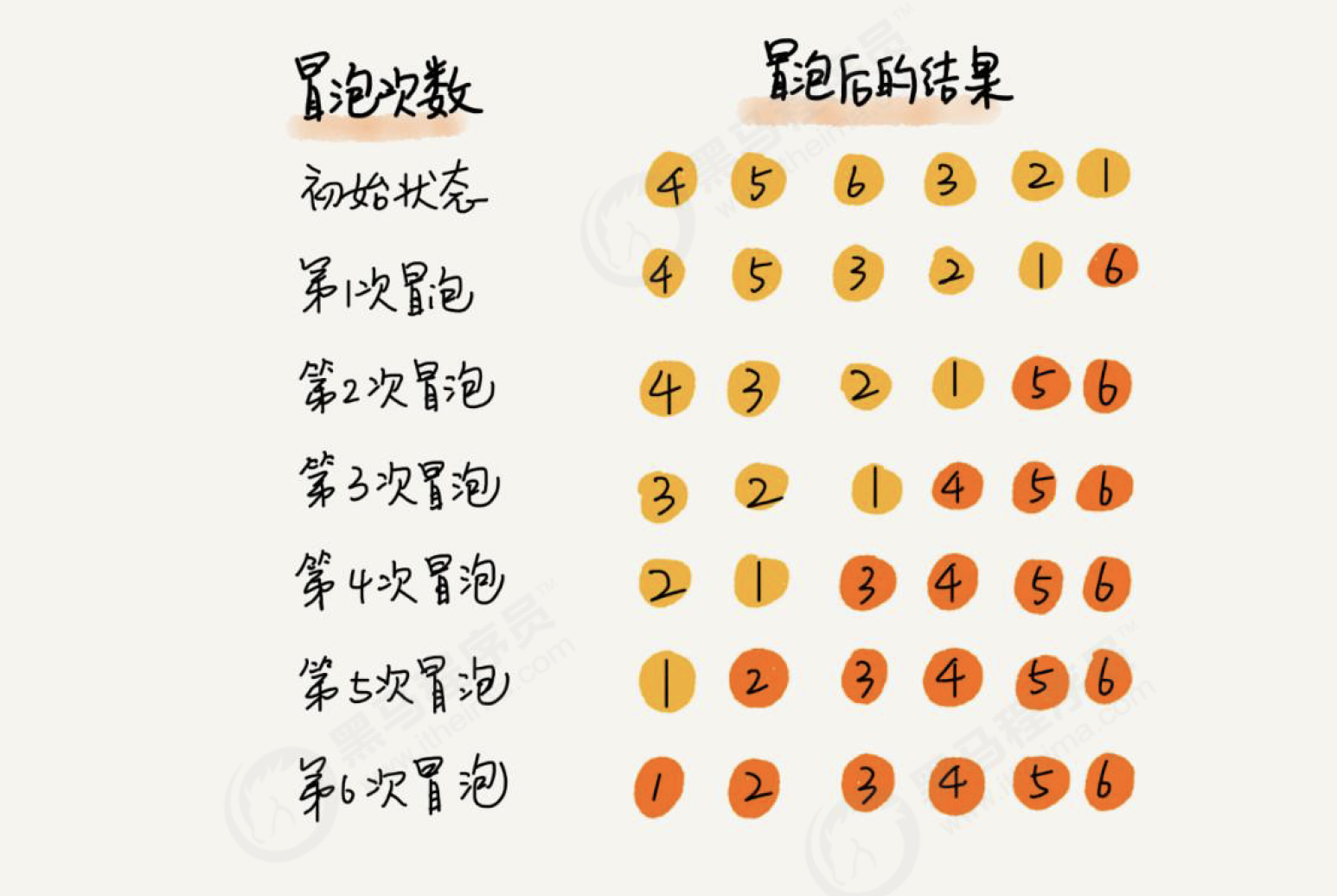Bubble Sort(冒泡排序)
介绍


排序原理:
比较相邻的元素。如果前一个元素比后一个元素大,就交换这两个元素的位置。
对每一对相邻元素做同样的工作,从开始第一对元素到结尾的最后一对元素。最终最后位置的元素就是最大值。
数组的简单实现
1 | package sorting; |
利用comparable接口的实现
1 | package cn.itcast.algorithm.sort; |
算法的performance
T(n) = O($n^2$)
- Post title:Bubble Sort(冒泡排序)
- Post author:Yuxuan Wu
- Create time:2021-07-13 00:50:23
- Post link:yuxuanwu17.github.io2021/07/13/2021-07-13-Bubble-Sort(冒泡排序)/
- Copyright Notice:All articles in this blog are licensed under BY-NC-SA unless stating additionally.